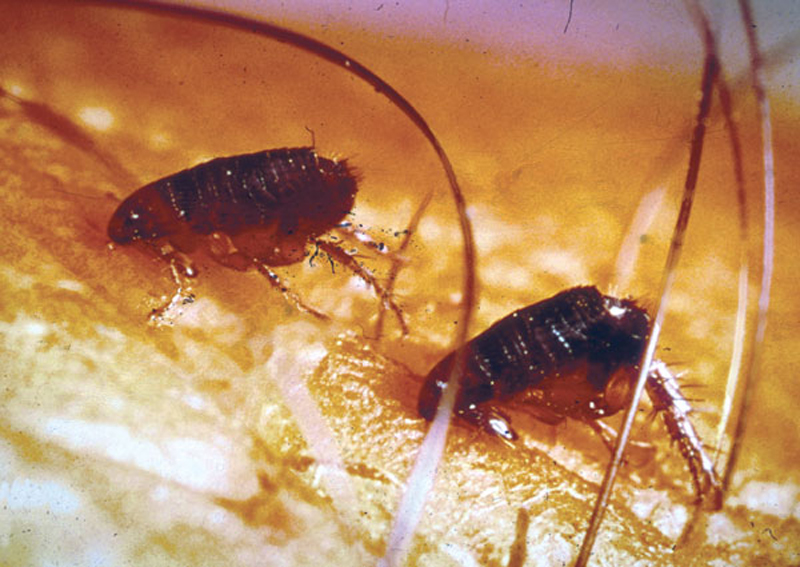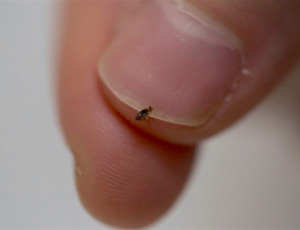Flea Treatments in Florida
Exterminator Services for Tallahassee, Quincy, Crawfordville
Fleas are tiny parasitic insects that feed on the blood of animals or people. In Florida, the warm climate allows these pests to stay active most of the year, often latching onto dogs, cats, or even wildlife before settling indoors. Areas such as Tallahassee, Quincy, and Crawfordville are no strangers to fleas, which can jump from yards into homes and quickly multiply if not addressed right away. Below, you will learn why fleas stay common in Florida, how to spot a potential outbreak, and why a professional flea exterminator is often required for flea treatments in Florida. You will also find useful guidance on blocking new infestations once the current fleas are removed.
Why Fleas Flourish in Florida
- Warm Conditions
Florida does not see the sustained cold spells that might reduce flea populations in other regions. Fleas can remain active for most of the year, going through multiple breeding cycles. - High Humidity
Flea eggs and larvae need moisture to avoid drying out. Florida’s humidity creates favorable settings for eggs to hatch and larvae to mature, both indoors and outside in grassy or shaded areas. - Many Animal Hosts
Wildlife, stray animals, and family pets provide fleas with steady feeding opportunities. Pets returning from walks or yards might carry fleas on their fur, leading to a full blown infestation inside. - Movement of Goods
Fleas can travel in luggage, shipping boxes, or used items, moving from one place to another. A few unseen fleas in a package may create a new colony if conditions allow them to feed and reproduce.

Signs of a Flea Problem
- Pets Scratching More Often
Animals often scratch or chew irritably at spots where fleas feed. You may notice red bumps or hair loss on the dog or cat’s back or belly. - Flea Dirt
Small black specks on pet bedding or fur may be flea droppings. Placed on a damp paper towel, these specks often turn red since they contain digested blood. - Bites on People
Flea bites on humans commonly appear around ankles or on lower legs, leaving small, itchy spots or welts. If multiple family members report similar bites, fleas might be present. - Sightings on Floors or Pet Items
In heavier infestations, fleas can be seen hopping on carpets, sofas, or dog blankets. Their quick movements and small size make them easy to miss at first. - Pet Anemia
Puppies or kittens with many flea bites may become weak if blood loss is high. Quick veterinary intervention is needed in severe cases.
Why Fleas Are Concerning
- Discomfort and Scratching
Constant bites upset both people and pets, leading to sleepless nights or skin problems if the fleas feed repeatedly. - Parasites or Diseases
Fleas can transmit tapeworms if ingested by animals or people, and some carry bacteria leading to additional health complications, though serious cases are less common. - Quick Spread
Flea eggs in carpets or upholstery hatch in just a couple of weeks, causing repeated waves of biting adults unless halted fully. - Distressed Animals
Pets under constant flea attack might refuse to eat or become anxious, affecting their overall health.

Why a Flea Exterminator Is Helpful
Some owners try vacuuming floors or using over the counter sprays, only to find that fleas return a few days later. Fleas go through several life stages including eggs, larvae, and pupae that often hide in carpet fibers or furniture seams. A professional flea exterminator uses insect growth regulators that target each developmental phase, along with spot treatments that kill adult fleas. They also give advice on washing pet bedding in hot water, bathing animals with recommended shampoo, and handling yard areas that harbor fleas. This complete approach beats short term attempts that miss hidden eggs.
Our Flea Treatments in Florida
- Inspection
We start by reviewing both inside and outside for signs of fleas, looking at pet beds, baseboards, carpets, or shady lawn corners. Identifying the main sources of fleas shapes our approach. - Targeted Products
After vacuuming up visible fleas, we apply insect growth regulators and residual sprays that eliminate eggs, larvae, and adults. We concentrate on floors, pet resting areas, and yard edges where fleas often cluster. - Occupant Safety
Residents usually only need to keep off freshly treated areas until products dry. By applying solutions carefully, we aim to eliminate fleas while maintaining a safe interior environment for people and pets. - Follow Up
Flea eggs may hatch after the first treatment, so scheduling a return visit or occupant diligence helps kill newly emerged fleas. We also confirm that occupants continue certain tasks such as laundering pet bedding and vacuuming floors often.
Fleas in Tallahassee
Tallahassee’s climate, along with its mixture of suburban and wooded areas, draws fleas if pet owners do not frequently groom animals or keep lawns trimmed. Our treatments often involve locating shady yard spots or corners indoors where fleas might nest. We apply products that disrupt the entire life cycle, then advise owners to check pets daily, wash pet blankets weekly, and remove yard debris that shelters fleas. These steps combined protect from future waves of fleas that might otherwise emerge from overlooked pupae.

Neighboring Towns: Quincy and Crawfordville
Quincy and Crawfordville, each near the capital city, have similar mild weather letting fleas multiply quickly. We begin by confirming fleas in carpets or dog bedding, then deploy insect growth regulators and residual sprays. If the yard allows, removing leaf piles and trimming shrubbery reduce cool places fleas favor. Owners often find success by mixing occupant tasks like vacuuming floors daily with professional solutions that kill fleas at every stage. This all around approach addresses not only adult fleas but also the hidden eggs likely to hatch later.
How to Prevent Fleas Long Term
- Groom Pets Regularly
Use flea combs or special shampoos recommended by a vet. Check around ears or belly for attached fleas after outside play. Ask about monthly flea preventives. - Wash Pet Bedding
Hot water cycles in the washer and a high heat dryer kill fleas or eggs lingering in blankets or cushions. Repeat weekly if fleas have been seen. - Vacuum Often
Vacuuming floors and furniture regularly removes eggs and larvae that might develop over time. Immediately throw out vacuum contents in a sealed bag to keep them from escaping. - Tidy Yard
Mow grass short and reduce piles of leaves or brush. Fleas wait in damp or shaded corners for passing pets or people. Smoothing out and drying these spots keeps fleas away. - Limit Wildlife
If wildlife crosses the property, ensure trash lids stay secure and remove leftovers. Stray animals or wild creatures can bring fleas that then latch onto your own pets.
Contact Us for Complete Flea Control
Seeing fleas hop on carpets, noticing repeated bites, or watching pets scratch uncontrollably are signs to act quickly. Contact us to learn more or schedule your service. Our flea treatments in Florida begin with a thorough check of the home and yard, using insect growth regulators to halt developing stages while killing adult fleas. Residents in Tallahassee, Quincy, or Crawfordville can rely on these professional methods for a stable, longer lasting solution. After the initial removal, occupant steps like vacuuming floors often and washing pet bedding on hot cycles ensure fleas find no easy way to come back.
Enjoy a Flea Free Environment
Florida’s mild climate often encourages flea activity, but timely detection and an expert flea exterminator plan save you from ongoing bites or health issues. Combining professional insect growth regulators with occupant routines like grooming pets or preventing yard dampness cuts off fleas from food sources and nesting spots. Whether you live in Tallahassee or rural areas near Quincy, consistent vigilance plus advanced treatments provide a cleaner, more comfortable space. Once fleas are removed, following daily tasks like storing pet bedding off floors or quickly wiping up water spills further reduces the chance of fleas regaining a foothold.
